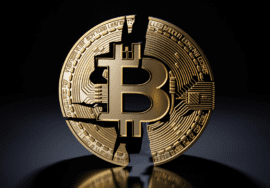

Global Electricity Demand, Trade and Diversification as Investment goals


Opinion by arsim@thejournalbiz.com
Electricity is considered essential to the functioning of modern societies and economies too. The role and its importance can be found at the very start of the Industrial revolution, when electricity entered the market and fundamentally changed how business is conducted.
Today electricity is a whole new sector on its own, and it plays a crucial role not only in tech and innovation, but raw production too. In other words, electricity is part of our daily life.
IEA prediction on electricity global usage


IEA chart
Electricity and capacity for diversification remains a priority as far as production is concerned, and that goes not only for developed economies but emerging ones as well.
The numerous challenges during the transition into renewable energy encouraged large industries to focus more on the diversification of energy sources rather than jump straight at the green transition, which many predicted wouldn’t happen as smoothly as once thought.
The war in Ukraine proves how important indeed is the global energy sector.
If we observe Germany, which for decades was supplied with Russian gas overall reached over 55% of the general consumption capacity, as per Eurostat. And when Russia attacked Ukraine, all of a sudden the gas turned into a big political issue that led the German economy into an existential crisis, so brutal that we can witness its shockwaves to this day. In fact, Germany is struggling with production since Covid days and their economy is heading towards recession.
Even though Germany started their transition to renewable energy way before the conflict started, while their economy had a positive outlook despite the gas issue, however, that effort proved insufficient by quite a margin, not surprisingly Germany returned to the old ways, reigniting their coal power plants to recover the gap left by the Russian gas.
Ever since the Paris Climate Agreement of the most economically developed countries, otherwise known as the G 7, who unanimously agreed to reduce gas emissions by at least 30% by 2030. Today, however, that scenario seems quite impossible, as obviously the world has bigger issues at hand.
World Data on Global Annual Emission


Chart by World Data
What’s more, the recent IEA report argues that the electricity demand has increased beyond forecasts, specifically the increase this year is twice as high as a decade ago the report emphasizes listing the warmer weather, the growth of the artificial intelligence industry, cryptocurrency mining sector and most importantly the robust industrial growth in China, India, and the US, which are considered the largest consumers of electricity.
As a consequence, the liquid gas trade has set new records in the markets. No wonder many other countries diversified their production of energy.
We can recall the impressive project implemented by Montenegro recently, a project that extends the pipelines from Italy with a length of circa 500 kilometers, all under the sea. A very expensive project indeed, but necessary for economic and energy reliability.
Bloomberg on Montenegro’s under water power line project


Chart Bloomberg, data by Stampa
But where does Kosovo stand as one of the richest countries with lignite (coal), and why does the tiny Balkans state face electricity issues to this day?
Just a few days ago, the UK-based company contracted by the former government “Contour Global” won the arbitration court and was rewarded with over 22 million euros, as compensation for the suspension of the contract, the one that would see them building power plants with a capacity of 500Mwv. The Kos government had suspended the project, hoping for a miracle in renewables as a singular choice of energy, the implementation of which is in its infancy in the entire Balkan region.
Moreover, Kosovo has also suspended a project that has to do with the diversification of energy, a project sponsored by the US office. And it’s suspension has raised a lot of speculation on why the project was halted in the first place, being that the gas supply is part of many European countries today.
The project saw Kosovo not only gain access to additional energy resources but efficiently eliminate once and for all the electricity crisis for its citizens and businesses operating in Kosovo.
Chart of global lignite reserves


IEA chart
So, instead of having a sustainable long-term plan for economic development, Kosovo’s policymakers choose an empty rhetoric without any goals. Instead of having genuine long-term investment plans, Kosovo opted for energy dependency and lack of any long-term goals.
Not surprisingly, Kosovo finds itself in quite an absurd position, where it claims to have natural resources, but has no expertise nor will to facilitate and produce something that could trade off after, and instead of selling electricity in the market, Kosovo ends up buying electricity, apparently the endemic corruption is taking its toll.
Regardless of what local critics may argue, for or against the policymakers’ decisions, the truth of the matter is that global electricity demand is expected to rise at a faster rate over the next three years, growing by an average of 3.4% annually through 2026. And whoever has diversified their electricity resource in a way that will ensure the local production isn’t affected by any external factors, while ensuring it has sufficient energy to trade in the international market, those countries can be argued to have already won the game, the game as the energy sector is coined to be the least preferred game of them all, and almost always has to be played long.








